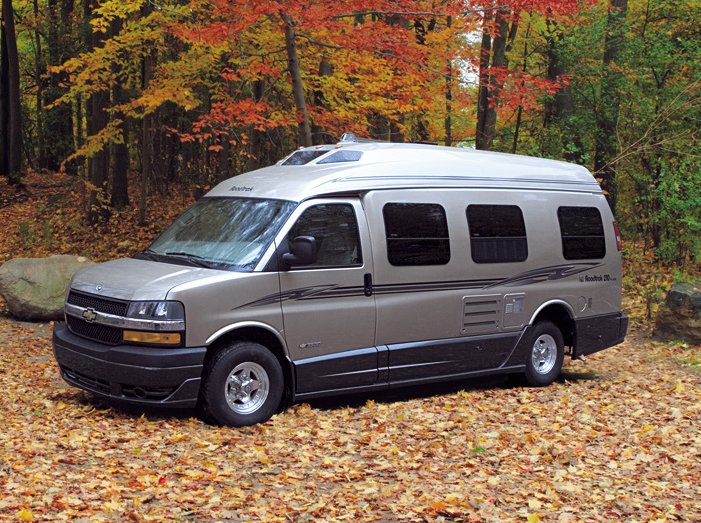Ready to hit the open road in your RV, but you don't know squat?
When it comes to recreational vehicles, there are two basic categories: motorized and towable. The motorized version is known as a motorhome or motorcoach, or simply RV, and comes in three main classes: Class A is the largest; weirdly enough, Class B is the smallest; and Class C is the mid-size version. Let’s check out the differences between RV classes.
Motorized RVs
Class A RV

Class A RVs are large fully-loaded rigs with a celebrity-like appearance. They’re often built on a commercial truck or bus chassis and range from 29 to 45 feet and more in length. Some have even more space with the use of slide-outs that hold a dining area or extra sleeping space.
Because of the size and length, Class A RVs don’t get the greatest gas mileage, but if you have a large group, it’s a great way to go. They can sleep up to eight or 10 passengers in comfort and luxury. They have lots of storage space and are good for extended stays, long-term travelers, and full-time RVing.
Class B RV

Also called a campervan, conversion van, or sleeper van, Class B RVs are 18 to 24 feet in length and look like your standard-size van. They usually have a small refrigerator, folding beds, and limited living space. Some may have toilets. Some Class B RVs have pop-outs that expand your space when parked. Others have high ceilings and even “pop-up” ceilings that expand up for added space.
They’re a good mix between Class A and C. While not as spacious as an A, they are much more fuel-efficient and easier to navigate than an A or C. The Class B is good for flexible travelers who want a less expensive, easy to drive, and versatile vehicle. It’s great for weekend getaways and trips where you just need a place to sleep.
Class C RV

Class C RVs are the midway point between A and B. They are built on a truck or van chassis, so they don’t have that "big rig feel" of the Class A. They’re typically 20 to 31 feet in length. They have lots of the same comforts and amenities in a smaller package and price tag than an A. They also get better fuel mileage.
As far as appearance, the main difference between C and A is the extra space above the cab in the Class C. It can be used for sleeping quarters or storage. Some have slide-out options for extra space when parked. They can accommodate two adults and up to three kids. The Class C is versatile for quick getaways as well as longer excursions.
Super C RV

The next type of RV is a Super C. They’re large and functional in that there’s living space as well as space for ATVs, a race car, an extra vehicle, or other large items. There’s a “garage” of sorts in the back and living space upfront. This allows you to bring a smaller vehicle (or ATVs, motorcycles, and other "toys") along with you. Having an extra vehicle is nice because it means you don't have to lug the whole Super C RV everywhere you go. Set it up at the campground and easily head out to explore.
They’re built for high towing capacity and have kitchens, bathrooms, and sleeping quarters. There’s usually an overhead bunk. It’s a popular version for motorsports and racing enthusiasts. It’s more powerful than a Class C while offering a lot of the same amenities as a Class A.
Towable RVs

Travel trailers, folding trailers (also known as pop-up trailers), and 5th Wheels require a vehicle like an SUV, a truck, or a van with a hitch to tow. The 5th Wheel has an extension on the front that extends over the vehicle that’s towing it.
Towable recreational vehicles offer comfortable accommodations in a portable package. It’s nice to be able to park the trailer and leave it at the campground or RV park while you use the vehicle to explore. On the downside, if you have a 5th Wheel, you're going to need a heavy-duty vehicle to tow it. A pop-up is fine with an average-size car and a tow hitch.
Are you in the market for an RV? If you’re having problems deciding, or just need to check out a few, give Transwest a call. Let us know what you find and where you go RVing.
